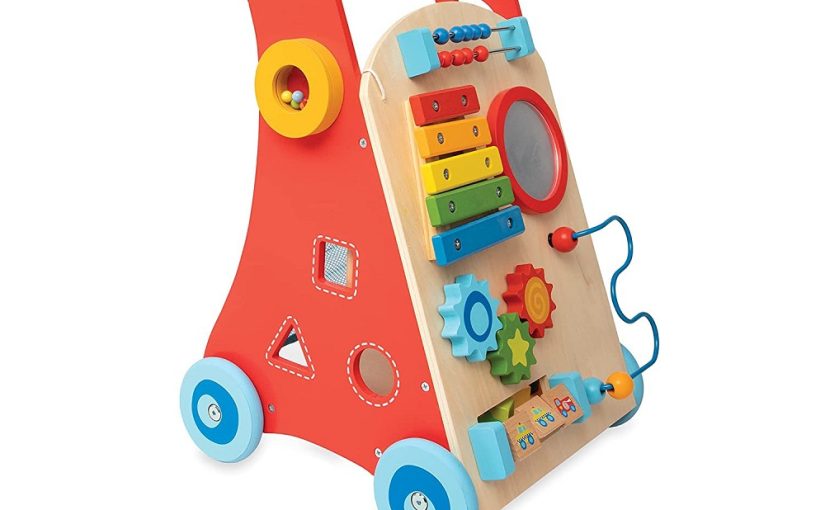Why Choosing the Right Toys Matters
Choosing the right toys for baby is crucial for their growth and safety. Toys play a vital role in a baby’s physical, emotional, and cognitive development. They also help babies explore the world around them while keeping them entertained.
Safe toys for baby ensure that your baby is not exposed to choking hazards or harmful chemicals. Poorly made toys can break easily, risking injury. By selecting safe and appropriate toys, you can give your baby a secure playtime experience.
Age-appropriate toys match your baby’s developmental stage, promoting better learning and engagement. For example, rattles stimulate sensory development in newborns, while stacking blocks improve problem-solving skills in toddlers. Choosing toys for baby that match your baby’s abilities keeps them challenged but not frustrated.
The materials of toys also matter. High-quality materials ensure durability and reduce the risk of sharp edges or toxic exposure. Opt for well-tested and certified toys to prioritize your baby’s safety.
In conclusion, selecting the right toys helps your baby develop while keeping them safe. Thoughtful choices make a big impact on their early years.
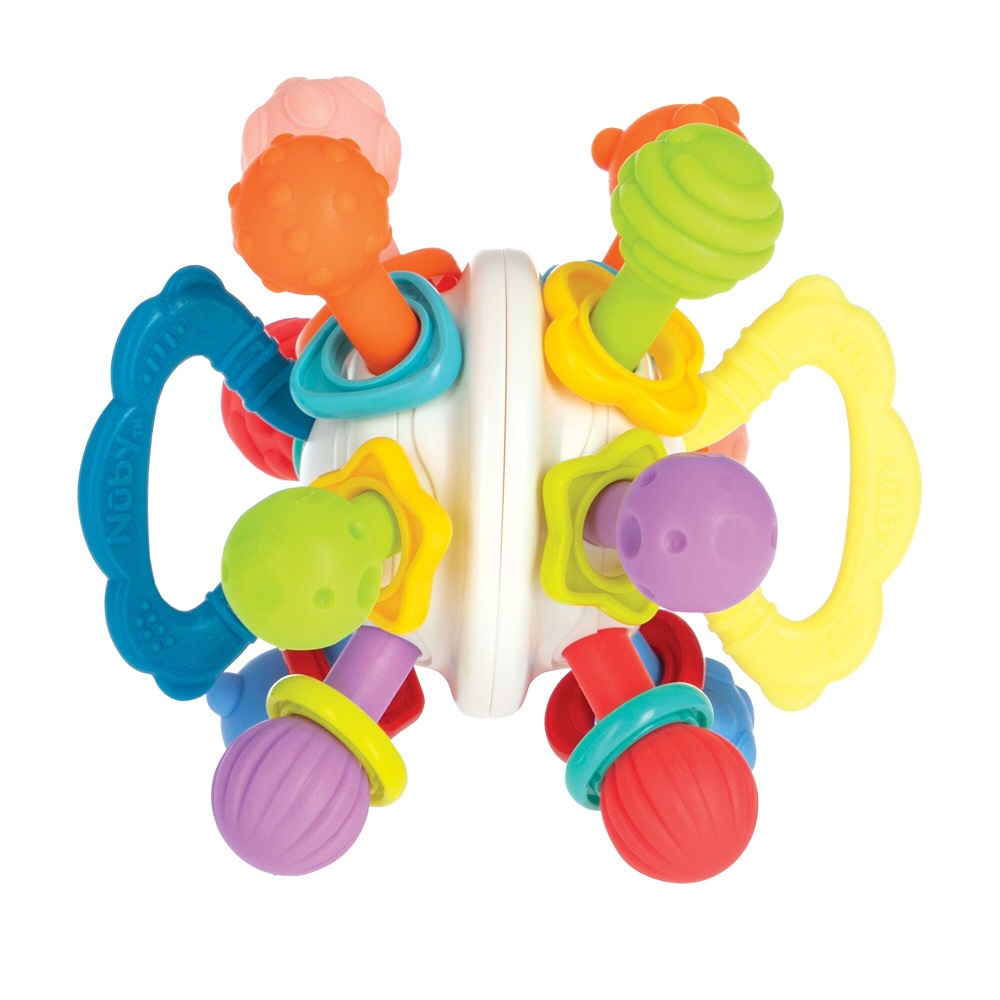
Safety Guidelines for Baby Toys
Ensuring your baby’s safety starts with understanding key toy safety guidelines. These practices can help protect your baby from harm.
- Check for Choking Hazards: Always avoid toys with small parts. If a toy fits into a toilet paper roll, it may be a choking risk for children under three.
- Sharp Edges and Points: Inspect toys for sharp edges, points, or corners. These can cause cuts or injuries.
- Avoid Strings and Ribbons: Avoid toys with strings or ribbons longer than 12 inches. These can pose strangulation risks.
- Non-Toxic Materials: Always choose toys made of non-toxic, BPA-free, and lead-free materials. Check for safety certifications like ASTM or CE labels.
- Battery Safety: Battery-operated toys must have secure compartments. Loose batteries or leakage can be hazardous.
- Size Matters: Opt for toys large enough to not be swallowed or inserted into the mouth.
- Age Recommendations: Check the age labeling on the packaging. Only choose toys labeled for your baby’s age group.
- Durability: Choose sturdy, well-constructed toys that won’t break easily under use. Broken toys can lead to injuries.
- Avoid Magnets: High-powered magnets can be fatal if swallowed. Avoid them entirely for babies and toddlers.
- Supervision: Always supervise your baby while they play. Even safe toys for baby can be misused.
Following these guidelines ensures that playtime is both fun and secure. Choosing safe toys for baby, along with active observation, creates a protected environment for exploration and learning.
Age-Appropriate Toys for Different Stages
Choosing toys that match your baby’s age ensures proper development and engagement. Here’s a guide for selecting age-appropriate toys:
Newborns (0-6 Months)
- Sensory Toys: Choose toys like rattles and soft mobiles to stimulate their senses.
- Soft Textures: Opt for plush toys with varying textures to encourage tactile exploration.
- High-Contrast Patterns: Black, white, and bright colors help newborns develop visual skills.
Infants (6-12 Months)
- Teething Toys: Provide non-toxic toys to soothe gums during teething.
- Interactive Toys: Toys with buttons or sounds promote cause-and-effect understanding.
- Stacking Cups: Help improve fine motor skills and early problem-solving.
Toddlers (1-3 Years)
- Building Blocks: Encourage creativity and improve hand-eye coordination.
- Push-and-Pull Toys: Boost walking skills and gross motor development.
- Simple Puzzles: Support cognitive growth and memory development.
Preschoolers (3-5 Years)
- Pretend Play Sets: Inspire imagination and social skill-building.
- Art Supplies: Crayons and paints nurture creativity and fine motor control.
- Educational Toys: Consider alphabet and number games for early learning.
Selecting age-appropriate toys ensures your baby enjoys safe and meaningful playtime that supports their growth.
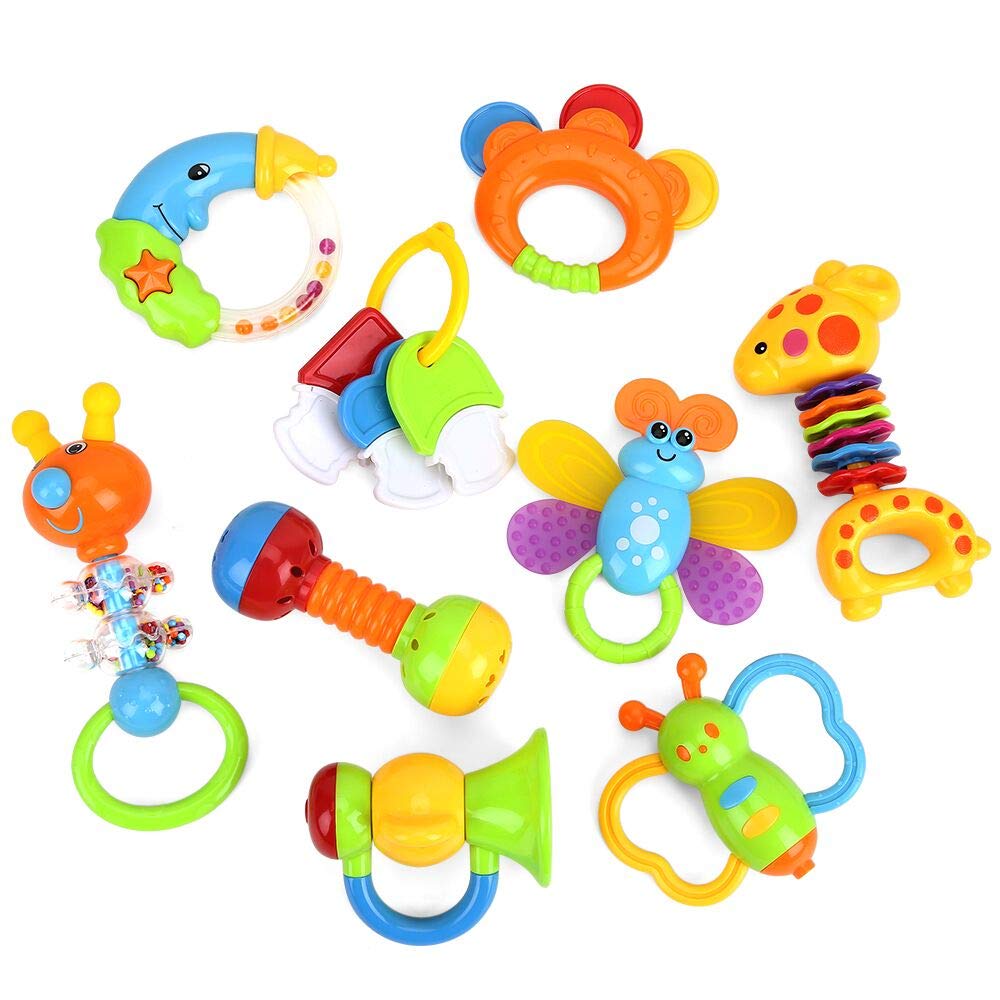
Materials to Look For and Avoid in Baby Toys
Choosing the right materials for baby toys is key to ensuring their safety and enjoyment. Some materials offer durability, while others pose potential health risks.
Materials to Look For
- Wood: Look for toys made from natural, smooth, and untreated wood. It is durable and safe.
- Non-Toxic Plastics: Select BPA-free and phthalate-free plastics to avoid harmful chemical exposure.
- Organic Fabrics: Choose cotton or other organic fabrics for clothing-based toys and plush items.
- Food-Grade Silicone: Ideal for teething toys, this material is soft and completely safe if bitten.
- Stainless Steel: It is safe, rust-free, and great for toys with a sturdy build.
- Painted with Non-Toxic Colors: Ensure that any painted toys use water-based, non-toxic paints.
Materials to Avoid
- PVC Plastics: Avoid toys made from PVC. They can contain harmful chemicals like phthalates.
- Lead and Heavy Metals: These can be in cheap paints or parts; always check for proper certifications.
- Fragile or Glass Materials: They can break easily and pose a risk of injury.
- Loose Fillings: Plush toys with poorly secured fillings can become choking hazards.
- Magnets: Avoid toys with magnets, as swallowing them can cause serious internal injuries.
- Harsh Chemicals: Steer clear of toys with long chemical names or unverified safety labels.
Prioritizing high-quality, tested materials ensures your baby’s playtime stays safe and enjoyable. Checking labels and certifications is essential to making informed choices.

How to Inspect Toys for Potential Hazards
Inspecting toys for baby is essential for your baby’s safety and well-being. Carefully examining each toy helps detect dangers that could harm your baby. Follow these steps to ensure toys are safe before letting your baby play:
- Check for Loose Parts: Ensure small parts, like buttons or beads, are firmly attached. Loose pieces can be choking hazards.
- Test the Strength: Pull and twist toys gently to check their durability. Weak toys can break and cause injuries.
- Inspect for Sharp Edges: Look for cracks, sharp corners, or broken pieces that could cut your baby’s skin.
- Examine for Small Pieces: If a toy’s part fits into a toilet paper roll, do not give it to children under three.
- Monitor Battery Compartments: Ensure battery compartments are securely closed with screws. Loose batteries can be dangerous if swallowed.
- Assess the Materials Used: Use non-toxic, BPA-free, and lead-free toys. Avoid toys with unclear material labels.
- Look for Safety Certifications: Check for safety standards like ASTM or CE markings. These symbols indicate the toy has passed safety checks.
- Smell and Touch: Avoid toys with strong chemical odors or a sticky surface. These may contain harmful substances.
- Review Ropes or Ribbons: Avoid toys with strings longer than 12 inches to prevent strangulation risks.
- Inspect Moving Parts: Ensure moving parts are smoothly designed. Avoid toys with pinch points or sharp mechanisms.
Frequent toy inspections reduce risks and ensure a secure playtime environment. By following these steps, you can protect your baby and encourage safe exploration.
The Importance of Regular Cleaning and Maintenance of Baby Toys
Cleaning and maintaining baby toys is essential for your baby’s health and safety. Toys can collect dirt, germs, and harmful bacteria over time. Regular cleaning prevents infections and illnesses.
Why Cleaning Baby Toys Matters
- Hygiene: Babies frequently put toys in their mouths. Clean toys reduce the risk of germs.
- Allergen Control: Dust and dirt can trigger allergies. Proper cleaning minimizes this risk.
- Material Longevity: Routine cleaning and maintenance help toys last longer without wear.
- Safety against Mold: Moist toys can grow mold. Regular checks and cleaning remove this hazard.
How to Properly Clean Baby Toys
Follow these steps to effectively clean your baby’s toys:
- Read Manufacturer Instructions: Check labels for recommended cleaning methods.
- Use Safe Cleaning Products: Choose baby-safe, non-toxic detergents or soap.
- Wash Plastic and Silicone Toys: Use warm, soapy water. Rinse thoroughly and air dry.
- Wipe Down Large Toys: Use a damp cloth with mild cleaning solution for big, non-immersible items.
- Sanitize Soft Toys: Machine wash plush toys on a gentle cycle. Air dry completely.
- Clean Battery-Operated Toys Carefully: Wipe with a damp cloth. Avoid water entering battery compartments.
Maintenance Tips for Baby Toys
- Inspect for Damage: Look for cracks, loose parts, or fraying seams regularly.
- Store Toys Properly: Keep toys in a dry, clean space to reduce dust buildup and wear.
- Use Storage Bins: Separate toys by type to prevent damage and tangling.
- Follow Age Recommendations: Ensure unsuitable older toys are removed as your baby grows.
- Replace Worn-Out Toys: Discard toys showing significant wear to avoid injuries.
Frequent cleaning and maintenance ensure toys stay safe and functional. A clean toy environment promotes healthy playtime for your baby.
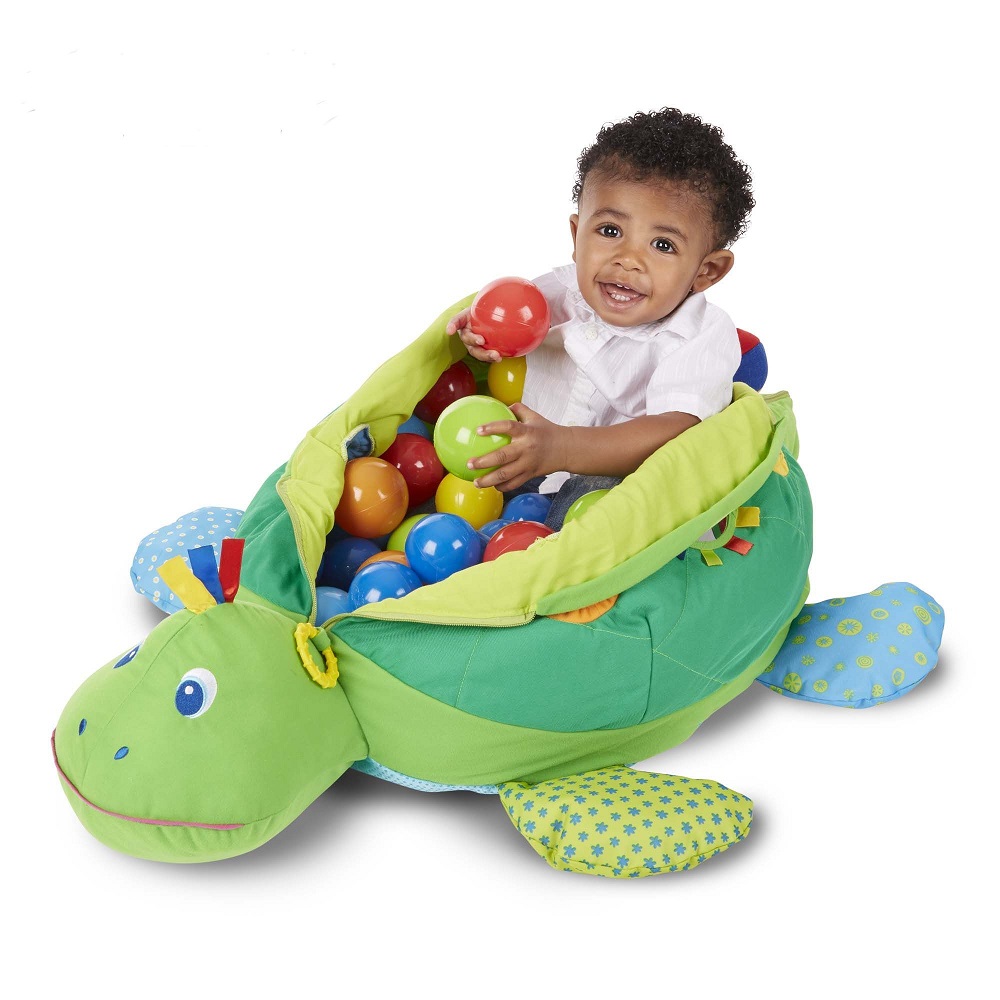
Eco-Friendly and Non-Toxic Toy Options
Choosing eco-friendly and non-toxic toys is important for your baby’s safety and the environment. These toys are made from safe materials and reduce exposure to harmful chemicals. They are also sustainable, supporting a healthier planet for future generations.
Benefits of Eco-Friendly Toys
- Safe for Babies: Non-toxic toys ensure no harmful chemicals affect your baby’s health.
- Environmentally Responsible: Made from sustainable materials, they reduce environmental impact.
- Durable and Long-Lasting: High-quality eco-friendly toys often last longer than cheap alternatives.
- Educational: Many eco-friendly toys help babies connect with nature and develop creativity.
Materials to Look For in Eco-Friendly Toys
- Natural Wood: Toys crafted from untreated or FSC-certified wood are safe and strong.
- Organic Cotton: Use toys made from organic cotton for a soft, toxin-free option.
- Bamboo: Bamboo is renewable, biodegradable, and gentle on the planet.
- Food-Grade Silicone: Ideal for teething toys, it’s soft, safe, and easy to clean.
- Recycled Materials: Toys made from recycled plastics or metals are eco-conscious and safe.
Brands Known for Safe and Eco-Friendly Toys
- Green Toys: Their products are made from 100% recycled materials.
- PlanToys: Specialize in sustainable wooden toys.
- Hevea: Known for natural rubber baby toys.
- Hape: Offers a wide variety of eco-friendly and educational toys.
Tips for Choosing Eco-Friendly Toys
- Read Labels: Look for non-toxic certifications like ASTM, CE, or EN71.
- Avoid PVC: Steer clear of toys made from PVC plastics.
- Support Sustainable Brands: Choose brands with eco-conscious production methods.
- Prioritize Multi-Use Toys: Select toys that grow with your baby to reduce waste.
- Check for Minimal Packaging: Opt for toys with little to no plastic packaging.
Investing in eco-friendly and non-toxic toys benefits both your baby and the environment. Thoughtful choices ensure safe playtime while promoting sustainability.
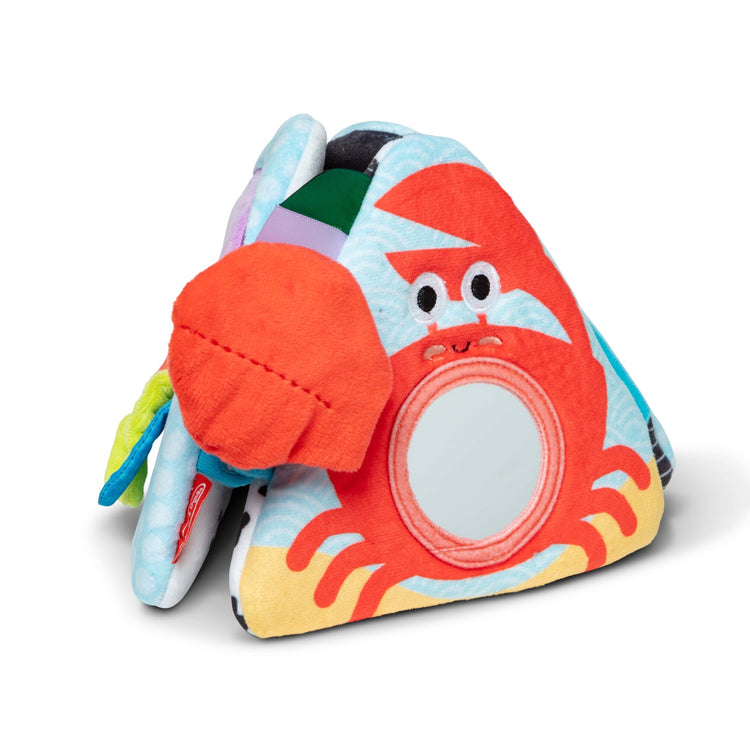
Tips for Organizing and Storing Baby Toys Safely
Organizing and storing toys safely helps keep play areas tidy and reduces safety risks. A well-organized system ensures toys are easily accessible while preventing damage or injuries. Below are practical tips for creating a safe storage system for baby toys.
Use Storage Bins and Containers
- Choose Clear Containers: Transparent bins make it easy to see the toys inside.
- Label Boxes: Add labels for quick identification of toy types.
- Use Stackable Bins: Save space with stackable containers to maximize storage.
- Separate by Type: Group toys by category, such as plush toys, blocks, or art supplies.
Keep Toys in Designated Areas
- Create a Play Zone: Dedicate a safe corner or room for toys.
- Use Shelves: Line up toys neatly on low shelves for easy access.
- Avoid High Storage: Keep toys within reach to reduce climbing risks.
- Rotate Toys: Store some toys away and rotate them to keep playtime fresh.
Prioritize Safety When Storing
- Secure Heavy Items: Anchor shelves and bins to walls to prevent tipping over.
- Avoid Plastic Bags: Steer clear of suffocation hazards by using bins instead.
- Remove Broken Toys: Dispose of damaged toys to avoid injury.
- Inspect Regularly: Check storage areas for hidden hazards like sharp edges or loose containers.
Teach Kids to Tidy Up
- Make It Fun: Introduce a game while cleaning up toys.
- Use Illustrated Labels: Pictures on storage bins help toddlers identify where toys belong.
- Provide Simple Rules: Teach babies and toddlers to place toys back after use.
Store Seasonal or Rarely-Used Toys
- Use Closets or Attics: Reserve space for toys not in daily use.
- Check Conditions: Ensure storage areas are dry to prevent mold.
- Vacuum-Seal Plush Toys: Reduce space while keeping them safe from dust.
Keeping toys for baby organized ensures a safe, enjoyable play environment. Regular checks and tidying keep the system efficient for parents and babies alike.
Prioritizing Safety in Toy Selection
Choosing safe toys for baby is a vital aspect of parenting. By understanding developmental needs and safety standards, you can make informed decisions that promote healthy growth through play. Prioritize age-appropriate, non-toxic, and well-designed toys that engage your baby’s senses and encourage motor skills.
As a parent, staying vigilant about potential dangers—such as choking hazards and toxic materials—provides peace of mind while you watch your baby explore their world. Creating a safe play environment and engaging in supervised playtime further enhances your child’s experiences and supports their development.
Ultimately, the right toys can provide endless joy and learning for your little one. By following these tips and prioritizing safety in toy selection, you can foster a nurturing environment that encourages exploration and creativity for years to come. Enjoy the delight of watching your baby learn and grow through play!
